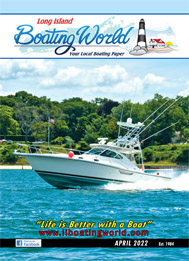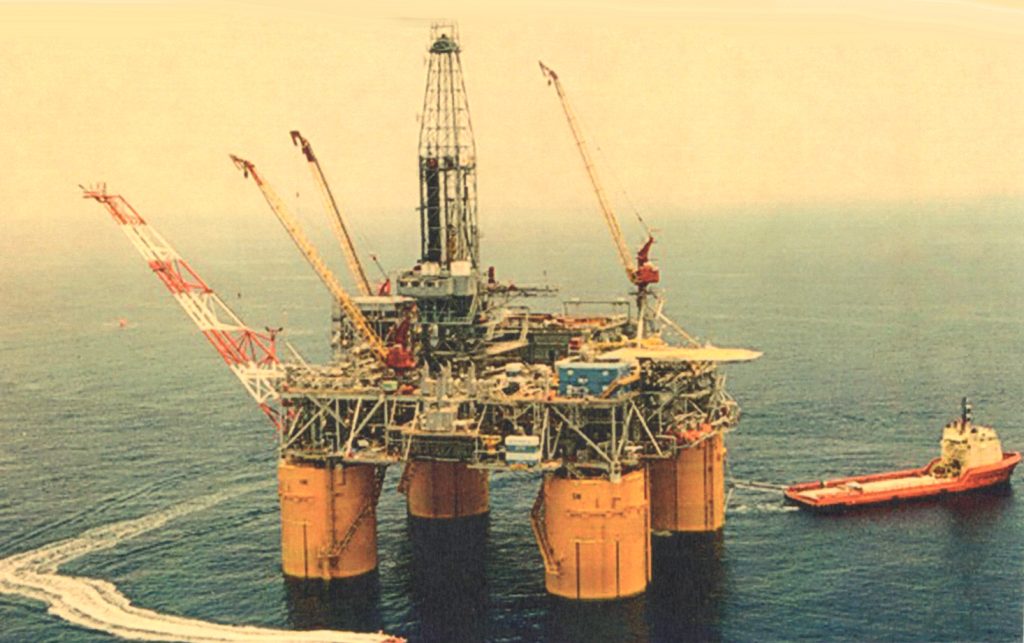
If you wanted to define water people you might say they need to be on the water, by the water, near the water or in the water. Water people find comfort sitting on a dock, swimming, fishing, crabbing, clamming, boating, surfing or just sitting in the car on a cold, wintry day looking at the water in the empty slips at the marina. Spending time landlocked seems like time wasted and we are uncomfortable, as we get further away from the ocean. People who need to be close to the water are described as aquaphles.
Being an aquaphle is a good start for a person interested in working on offshore oil and gas or wind energy platforms. The offshore oil rigs, somewhat like small cities, are tall metal structures, some almost as tall as the Empire State Building. The work of sucking up oil and gas goes on 24/7. Much like a hospital, the work never stops and day crews meet the night crews for “handover” meetings at the beginning of their shifts.

There are backup systems and there is safety equipment that would cover any emergency situation. Nothing is left to chance because of the high potential for accident, explosion or fire.
Hydrogen sulfide, a byproduct of the extraction process, is a constant threat and workers are trained on what to do and where to go if there is a leak. Crews hold daily emergency drills. Those in fire emergency crews wear suits that weigh fifty pounds to protect them. They usually work twelve-hour shifts and work seven, twelve or more days followed by an equal amount of time off.
Mental fitness and physical fitness count, as the twelve-hour shifts day after day are very tiring. The survival course (Basic Offshore Safety) teaches how to provide first aid, how to operate a lifeboat, how to survive a helicopter crash and has to be successfully completed before being hired to work on an oil rig.
Larger oil drilling rigs employ about 200 or more workers and their living accommodations tend to be somewhat Spartan because of limited space. They generally sleep two to four in a room with bunk beds. All the rigs have a galley with food available 24/7. Some have a sports area with ping-pong and pool tables. Newer, larger rigs may have music rooms with several instruments. At one time there were 1470 offshore rigs around the world.
Living and working on an offshore rig can be challenging. If you fall overboard at night, it’s not likely you’ll survive or your body will be found. If smoking and drinking were part of your lifestyle you would not want to work on an oil rig. A stray spark picked up by the sensors will turn everything off and flood the area with water.
What’s it like to live at your worksite on a tall metal platform that sways in the wind and work twelve-hour shifts for weeks with no time off before leaving the rig? Workers are slower to react, suffer from fatigue and that makes them more vulnerable to accidents. A noisy place to work, an oil rig has non-stop loud machine noise, making it hard to hear human voices. Eleven percent of the workers who died in 2006 were crushed or electrocuted. Seven percent died as a result of falls. Twenty-two percent died when other workers dropped tools that fell on them. Explosions and fires took another fifteen percent of the workers.
The long shifts are what they are and workers with the commitment to continue working offshore get used to them or leave. Some workers recall earlier jobs they had that promised a five on two off week that turned into six on one off with no extra pay when they factored in the weekend phone calls and computer directives. Those with marital problems or those who are divorced say workers need to address how different married life would be for an offshore worker before they get married.
On the plus side, these offshore jobs pay higher salaries. With no way to leave the platform and spend money, some of the workers have invested online. If they do well investing, their use of spare time is as financially rewarding as a business they could be running on the Internet.
I asked an offshore worker about his life on an oil-drilling platform. As an engineer, did he have any more time off or any extra benefits? No, everybody plays by the same rules. Asked if he was married and he was for over ten years, he said. He and his wife don’t have children. His wife works and goes to graduate school. She misses him but they spent a lot of time before they got married talking about how their lives would be different from her sisters’ married lives that are more traditional and that was OK with her.
He works with close to 200 others on a newer platform but has worked on several other platforms that were older and had fewer amenities. He’s happy now to have his own sleeping space. Shared space meant not going back in case you forgot something because you would disturb the other worker’s sleep. Asked if he was a water person, he said that’s what helped him make the decision to work offshore. He never asked any of his co-workers about it but he knew some felt the same level of comfort he did living and working close to the water
As the governments of foreign countries look at the overall picture of climate change and the need to change the way energy is supplied by non-carbon renewable sources like solar and wind, wind has become the favored substitute. Europeans have invested heavily in offshore wind farms. The UK’s Walney wind farm has 87 turbines, making it the largest offshore wind farm in the world. Offshore wind energy accounts for 210,000 jobs in Europe.
The North Sea was home to numerous oil drilling platforms that provided electricity for European countries. Much of the living and working space of abandoned oil drilling platforms have been taken over by wind energy farms and converted to living and work space for a business with the same goals, providing electric power, as the previous tenants, only in a more environmentally friendly way.
Considering the very complicated approval process of impact assessments and finding suitable locations for them, wind farms have made surprising progress in Europe, which may speak more to European awareness of climate change and the need to reduce carbon emissions than what you see in the US. The US has one wind energy farm, just off Block Island. There are five turbines generating power to Block Island and the next scheduled wind farm to be built is the first commercial scale wind farm, Vineyard, off Massachusetts in 2024. That now has final approval.
In late February the sale of six ocean wind leases off the coasts of New York and New Jersey from Montauk to Cape May brought in over four billion dollars. More than twelve companies in a bidding war took the bids up beyond what had been considered high cost gas and oil leases. New York and New Jersey anticipate 9000 and 7500 megawatts from their wind farms by 2035.
In view of the potential conflict with ocean users and to minimize environmental impact, the Department of the Interior reduced the acreage of saleable leases by 72%. Before it’s too late the needs of the commercial fishermen will have to be addressed. You can’t have one agency of the government telling us to eat more fish and another agency of the same government taking away the prime locations of the commercial fishermen.
The big oil companies moved into the competition for offshore leases for wind farms hoping to not only improve their bottom lines but show their stockholders they’re concerned enough about climate change to make the transition from fossil fuel to clean energy. This will make unique opportunities for companies that already have oil and gas platforms in place that they can sacrifice to make space for their new wind farms. Fewer workers will be needed and the work will be cleaner and less dangerous. It should be a good opportunity for someone with oil rig experience.
